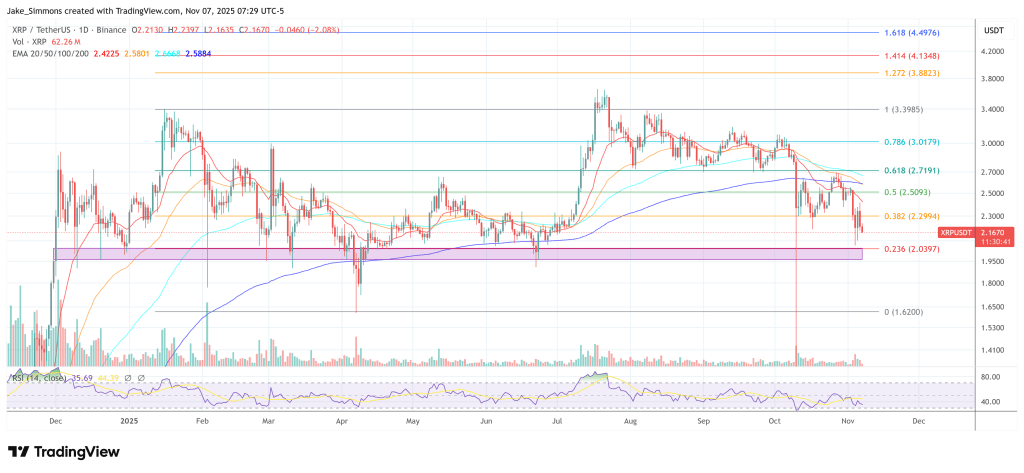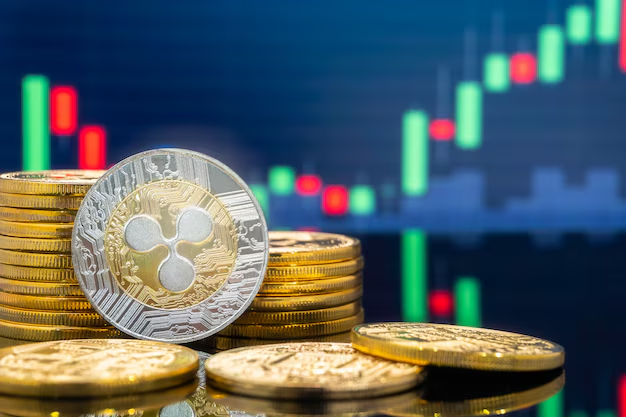
In a research note dated 06 Nov 2025, Bayberry Capital argues that XRP’s value is being systematically misread because markets are pricing a “token” rather than the underlying system it is meant to enable.
The firm’s core thesis is unambiguous: “The market continues to misprice XRP because it does not understand what it is valuing. It sees a token. It does not see the system underneath it.” Framed as a meditation on how infrastructure gets valued, the essay contends that XRP’s current market treatment reflects a category error—confusing short-term speculation with the long-duration mechanics of liquidity plumbing.
Why XRP Is Mispriced
Bayberry anchors its case in the historical pattern of overlooked infrastructure. Early in technology cycles, the post notes, investors chase visible growth while “overlooking the foundations that make that growth possible.” That analogy is central to the firm’s XRP view.
The note calls XRP “the plumbing for the next era of finance,” suggesting that the absence of dramatic price action says little about ultimate relevance: “The market sees a quiet chart and assumes irrelevance. What it is actually witnessing is the slow formation of an invisible network that will one day underpin global liquidity.”
From this vantage, XRP’s purpose is neither “entertainment” nor “momentum.” It is engineered as a neutral bridge asset—connective tissue across currencies, payment networks, and tokenized value. Bayberry stresses that such a role demands institutional adoption, regulatory clarity, and deep technical integration, all of which progress on multi-year, not multi-week, timelines.
The firm writes: “The market cannot price what it does not understand… its entire architecture is monetary, not promotional.” The implication is a mismatch between how traders and analysts typically appraise crypto assets and the metrics that actually matter for settlement infrastructure.
The piece repeatedly contrasts emotion-driven markets with utility-driven adoption. In Bayberry’s words, “Utility adoption moves differently from market emotion… True adoption is slow, silent, and final.” Once real institutional settlement flows accrue, that liquidity tends to persist and deepen rather than churn with narratives. This, the firm suggests, is why “XRP’s stability is not a weakness. It is a reflection of the phase it is in.”
On supply, Bayberry pushes back against headline figures as a sufficient valuation lens. The post reframes the debate around effective circulating supply versus utility demand. It emphasizes that a meaningful portion of XRP is locked in escrow or held long-term, reducing the immediately available float for settlement.
The pricing mechanism the firm describes is mechanical rather than speculative: “As transactional volume scales, velocity increases and available liquidity tightens. This compression of float against rising demand is what produces real price discovery. It is not speculation. It is mechanics.”
Regulation, in Bayberry’s telling, is the missing link that converts potential into production use. The note argues that digital-asset markets have treated legal clarity as an afterthought, whereas in traditional finance, rules are a precondition for deployment. “It transforms the asset from a legal risk into a compliant bridge mechanism that banks and institutions can actually use,” the post says, adding that the market “has not yet adjusted for that shift.” The claim is not that regulation is sufficient on its own, but that it supplies the framework within which utility can scale.
Bayberry also situates XRP within what it calls “the coming wave of tokenized value,” in which bonds, treasuries, currencies, and commodities migrate to ledgers. In that world, interoperability becomes a first-order constraint. “Those systems cannot interoperate without a neutral bridge asset that can settle across networks. XRP was built precisely for that function,” the firm writes. Here again, the emphasis is structural demand—“the new oil of global finance”—that arises from necessity, not from hype cycles.
A recurring theme is the opacity of enterprise adoption relative to retail expectations. “True adoption rarely announces itself,” Bayberry notes, characterizing institutional integrations as deliberately quiet: pilot corridors, enterprise solutions, and liquidity partnerships that are tested privately and scaled only when reliable. The market’s desire for public excitement, the post argues, is misaligned with what institutions actually require: certainty and flawless operations. “The groundwork being laid today will not reflect in price until the infrastructure becomes critical to operations.”
The firm distills the mispricing to a matter of perspective: “The mispricing exists because the market still views XRP as a trade rather than a transformation… When perspective shifts from price charts to liquidity mechanics, valuation models change completely.”
Bayberry’s final paragraph crystallizes its view that the asset is being judged as an event rather than a system: “Value in financial architecture accrues slowly, then all at once.” In that telling, the inflection arrives when distributed settlement ceases to be experimental. At that point, the firm contends, “XRP will no longer need promotion or defense. Its utility will speak for itself.”
At press time, XRP traded at $2.16.



















